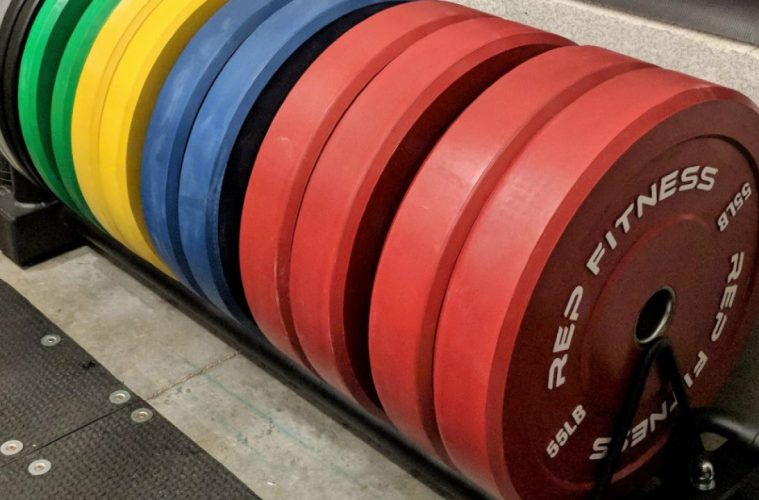Whether you are looking to set up a new home gym or considering the best weights at your local lifting spot, when looking up dumbbells online, you are likely to come across two weight plate types: Iron or traditional and bumper or rubber-coated hex dumbbells or weights. Both plate types come in a variety of weights and appear similar — other than the coatings. How do you tell the difference or which is right for you? While the different materials might seem strange to someone new to lifting, there are pros and cons to each.
Traditional Iron Plates
When you think of the old-school, bodybuilding-type gyms, it is not hard to picture lifters posing with industrial-looking iron plates. Iron plates are made from pouring molten iron into forms, and these forms are typically regulation sizes. Despite the durable material, if you drop an iron plate, it is likely to crack or damage.
Many people feel motivated and inspired by the classic look and gritty feel of iron weights. They are also easier to grab and mounts than some neoprene dumbbells and plates because holes are incorporated into the design. While more traditional, iron weights will last a long time when properly cared for.
When To Use
You should use traditional iron weight plates when bodybuilding is your primary objective. The traditional bodybuilding approach is about form and tension, meaning you are less likely to drop the weights to the ground, resulting in damage. If your routine is about a slow build and form, then an iron plate might be the best option for you, especially if the old-school style motivates you. However, if you are more of a powerlifting fanatic, bumper plates are likely best.
Bumper Plates
Many modern gyms now carry colorful, rubber-coated weight plates instead of the racks of hard iron plates of the past. These rubber-coated weights are known as bumper plates. The rubber is a protective element, ensuring the plates can withstand a drop without experiencing significant damage. Because of the thickness of the rubber, these weights can be dropped from overhead without resulting in harm to the weight. However, there is a difference between weight plates with a thin rubber coating and bumper plates, the former will still break or crack if dropped.
When To Use
Interval training often involves rapid movements from one exercise to the next. In these types of workout programs, like CrossFit, bumper plates are highly recommended. It is not uncommon for weights to experience a fair bit of dropping during these routines, and the thick rubber coating will protect them.
These weights are also ideal for powerlifting routines. During these workouts, an individual pushes themselves to lift as much weight as they can. At the peak of the lift, most will release the bar and weights, allowing them to crash to the ground. Bumper plates will protect the weight.
Final Thoughts
The type of weight you prefer, traditional iron or bumper, depends on your workout style. If you are more into bodybuilding, go with an iron weight set. If you prefer interval and power-focused exercises, go with bumper plates. If you are unsure of which is best, go to your local gym equipment supplier and ask questions.

